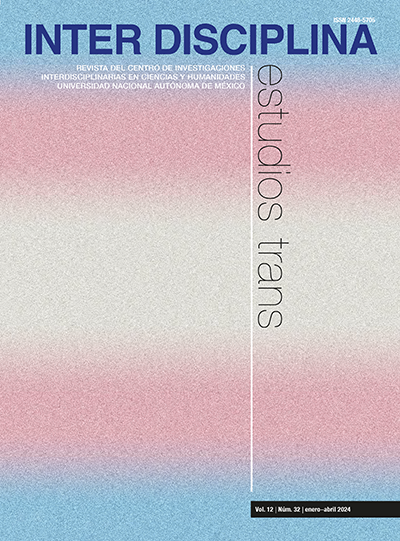Poder de decisión de los partidos políticos en las LXIII y LXIV Legislaturas mexicanas: un análisis con teoría de juegos y simulaciones
Contenido principal del artículo
Resumen
Las decisiones tomadas en los diferentes congresos son de gran trascendencia para el ámbito social y económico de un país, pues sin una cooperación entre los partidos se puede estancar la aprobación de reformas y leyes. La manera en que se estudia la dinámica del poder de decisión entre las distintas fuerzas políticas puede ser abordada desde un punto de vista cuantitativo. Por lo anterior, en la presente investigación se analiza el poder de decisión de los partidos políticos en las Legislaturas LXIII y LXIV por medio de distintos índices ofrecidos por la teoría de juegos cooperativos y mediante simulaciones desarrolladas en Scilab. La importancia de estudiar este tipo de tópicos desde un enfoque interdisciplinario radica en el mejor entendimiento de la conducta política dentro de los congresos y en el conocimiento de las múltiples formas que se pueden tener para poder aprobar los diferentes acuerdos. Se encuentra que, en tres años, MORENA aumentó en más de un 60% su poder de decisión y el PRI ha perdido casi un 50% del mismo. También se pudo verificar que el PRI es el partido más beneficiado al hacer coaliciones, y el PAN el más perjudicado en este tipo de análisis.
Descargas
Detalles del artículo
Citas en Dimensions Service
Citas
Amer, R., Carreras, F. y Magaña, A. 2003. Juegos simples e índice de poder de Shapley-Shubik. Revista de Estudios Políticos (Nueva Época), 121: 107-136.
Aumann, R. y Dreze J. 1974. Cooperative games with coalition structures. International Journal of Game Theory, 3: 217-237.
Alonso, J. y Fiestras, G. 2002. Modification of the Banzhaf value for games with a coalition structure. The Annals of Operations Research, 109: 213-227.
Banzhaf, J. 1965. Weighted voting doesn’t work: A mathematical analysis. Rutgers Law Review, 19(2): 317-343.
Bonilla, C. 2004. A model of political competition in the underlying space of ideology. Public Choice-Springer, 121(1/2): 51-67.
Bonilla, C. y Gatica, A. 2005. Economía política neoclásica y América Latina: una mirada a la bibliografía. El Trimestre Económico-FCE, 72(285-1): 179-211.
Carreras, F. 1992. Estudio coalicional de los parlamentos autonómicos españoles de régimen común. Documento de Trabajo 92-13 (Serie de Economía 08): 1-21.
Carreras, F. y Owen, G. 1995. Valor coalicional y estrategias parlamentarias. Revista Española de Investigaciones Sociológicas, 71/72: 157-176.
Chua, V. y Huang, H. 2003. The Shapley-Shubik index, the donation paradox and ternary games. Springer, 20(3): 387-403.
Colomer, J. M. Instituciones políticas. Barcelona: Ariel.
Deegan, J. y Packel, E. 1979. A new index of power for simple n-person games. International Journal of Game Theory, 7: 113-123, 1979.
Downs, A. 1957. An economic theory of political action in a democracy. Journal of Political Economy, 65(2): 135-150.
Felsenthal, D. y Machover, M. 1996. Alternative forms of the Shapley value and the Shapley-Shubik index. Springer, 87(3): 315-318.
Geddes, B. 1991. A game theoretic model of reform in Latin American democracies. American Political Science Review, 85(2): 371-392.
Gilles, Robert P. 2010. The cooperative game theory of networks and hierarchies. USA: Springer.
Gillies, Donald Bruce. 1953. Some theorems on n-person games. Tesis de doctorado. Princeton: Princeton University.
Heywood, A. 2017. Political ideologies: an introduction. 6a ed. Basingstoke: Macmillan International Higher Education.
Hinich, M. y Munger, M. 1994. Ideology and the theory of political choice. Ann Arbor, USA: University of Michigan Press.
Holler, M. J. y Packel, E. W. 1983. Power, luck and the right index. Journal of Economics, 43(1): 21-29.
Hotelling, H. 1929. Stability in competition. Economic Journal, 39: 41-57.
Kirsch, W. y Langner, J. 2010. Power indices and minimal winning coalitions. Springer, 34(1): 33-46.
Larios Ferrer, J. L. 2022. Estabilidad e inestabilidad políticas en las LXII y LXIV Legislaturas mexicanas, desde la perspectiva de la teoría de juegos. Revista Mexicana de Ciencias Políticas y Sociales, 67(244). https://doi.org/10.22201/fcpys.2448492xe.2022.244.72754.
Laruelle, A. y Valenciano, F. 2001. Shapley-Shubik and Banzhaf indices revisited. Informs, 26(1): 89-104.
Leech, D. 1990. Power indices and probabilistic voting assumptions. Public Choice, 66(3): 293-299. https://doi.org/10.1007/BF00125780.
López Sandoval, I. M. 2016. Elección pública y análisis institucional de la acción gubernamental. Economía Informa, 396(1): 49-66.
Munkres, J. R. 2000. Topology, 2a ed. USA: Prentice Hall.
Nacif, B. 2003. Policy making under divided government in Mexico. Working Paper 305, Kellogg Institute, 1-25.
Nash, J. 1953. Two-person cooperative games. Econometrica, 21(1): 128-140. https://doi.org/10.2307/1906951.
Negretto, G. L. 2003. Diseño constitucional y separación de poderes en América Latina. Revista Mexicana de Sociología, 65(1): 41-75.
Neumann, J. V. y Morgenstern, O. 1944. Theory of games and economic behavior. USA: Princeton University Press.
Owen, G. 1977. Values of games with a priori unions. En R. Henn y O. Moeschlin (eds.), Mathematical economics and game theory. Nueva York: Springer Verlag, 76-88.
Owen, G. 1981. Modification of the Banzhaf-Coleman index for games with a priori unions. En M. J. Holler (ed.), Power voting and voting power. Wurzburg, Alemania: Physica-Verlag, 232-238.
Paoli Bolio, F. J. 2012. Tiempo de coaliciones: cinco lustros de elecciones en México. Revista IUS, 6(30): 136-148.
Parilina, E. y Sedakov, A. 2015. Stochastic approach for determining stable coalition structure. International Game Theory Review, 4(17): 1-22.
Peleg, B. y Sudholter, P. 2007. Introduction to the theory of cooperative games. 2a ed. Nueva York: Springer. https://doi.org/10.1007/978-3-540-72945-7_1.
Rota, G. C. 1964. The numbers of partitions of a set. American Mathematical Monthly, 71(5): 498-504.
Sánchez, S. F. 1994. Introducción a la matemática de los juegos. México: Siglo XXI.
Shapley, L. S. 1963. Some topics in two-person games. En Dresher, M., Shapley, L. S. y Tucker, A. W. (eds.), Advances in game theory. Princeton: Princeton University Press, 1-28. https://doi.org/10.1515/9781400882014-002.
Shapley, L. S. y Shubik, M. 1954. A method for evaluating the distribution of power in a committee system. American Political Science Review, 48: 787-792.
Shick, P. L. 2007. Topology: point-set and geometric. USA: Wiley-Interscience.
Vargas Hernández, J. G. 2006. La nueva economía política en la transformación institucional del Estado-Nación. Problemas del Desarrollo. Revista Latinoamericana de Economía, 37(145): 31-51.

Esta obra está bajo una Licencia Creative Commons Atribución-NoComercial-SinDerivar 4.0 Internacional.





